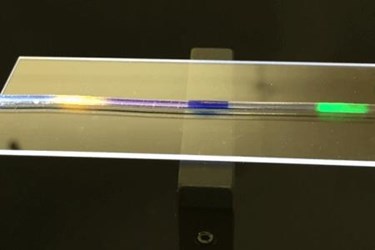Stretchy Optical Fibers Could Detect Disease

Optical fibers designed using biocompatible hydrogel could play a role in next-generation, flexible biosensors, according to scientists at Harvard University and MIT. By tracking the quality of light shining through the stretchy fibers, researchers could use the technology in implantable or wearable devices to monitor muscle mobility, tumor growth, or inflammation over time.
Hydrogel’s flexibility and structural similarity to human tissue make the material uniquely suited for biomedical applications, and recent advances in hydrogel technology have increased their popularity among engineers designing less invasive medical devices. Xuanhe Zhao, associate professor in MIT’s department of mechanical engineering, and his team have been working with hydrogels for several years, devising methods to fine tune its mechanical properties to make the material more robust while retaining its pliability.
Zhao’s idea to combine the mechanical advantages of hydrogels with the utility of optical fibers began with research conducted at Harvard under associate professor Seok-Hyun Yun in 2014. Yun’s optical fibers successfully transmitted light but broke when stretched. By combining Yun’s findings with Zhao’s hydrogel technology, scientists were able to create optical fibers that can stretch to seven times their original length, designing a cladding polymer solution that acts as “molecular-level glue.”
Zhao and Yun, who published a study in Advanced Materials, found that, when the optical fibers were doped with florescent dyes, researchers could measure the light absorbed and scattered through the fibers as they were stretched, and monitor their location and strain.
“When you stretch a certain portion of the fiber, the dimensions of that part of the fiber changes, along with the amount of light that region absorbs and scatters, so in this way, the fiber can serve as a sensor of strain,” said MIT graduate student, Hyunwoo Yuk, to MIT News. Yuk added that the material could be incorporated into wearable or transplantable devices.
Zhao commented that the “impactful” applications of the fibers could include long-term diagnostics to monitor tumor growth or inflammation. Fibers implanted in arms or legs could detect changes in patient mobility over time or in developing optogenetic therapies, which use light to precisely control nerves.
According to Zhao, traditional optical fibers are rigid and incompatible with sensitive brain tissue, but if these “fibers could match the flexibility and softness of the brain, they could provide long-term, more effective stimulation and therapy.”
Fiorenzo Omenetto, an expert in fiber technology, said that the research compiled by Harvard and MIT represented a “compelling direction” for embedding light in the human body. Though he was not involved in the research, Omenetto told MIT News that “These efforts in optimizing and managing the physical and mechanical properties of fibers are necessary and important next steps that will enable practical applications of medical relevance.”
Last year, Zhao’s team introduced a hydrogel wound dressing that could deliver medication, monitor temperature, and light up when it’s ready to be changed. Because the material is more biocompatible than traditional dressings, researchers noted that it could be used in applications both inside and outside the body.
